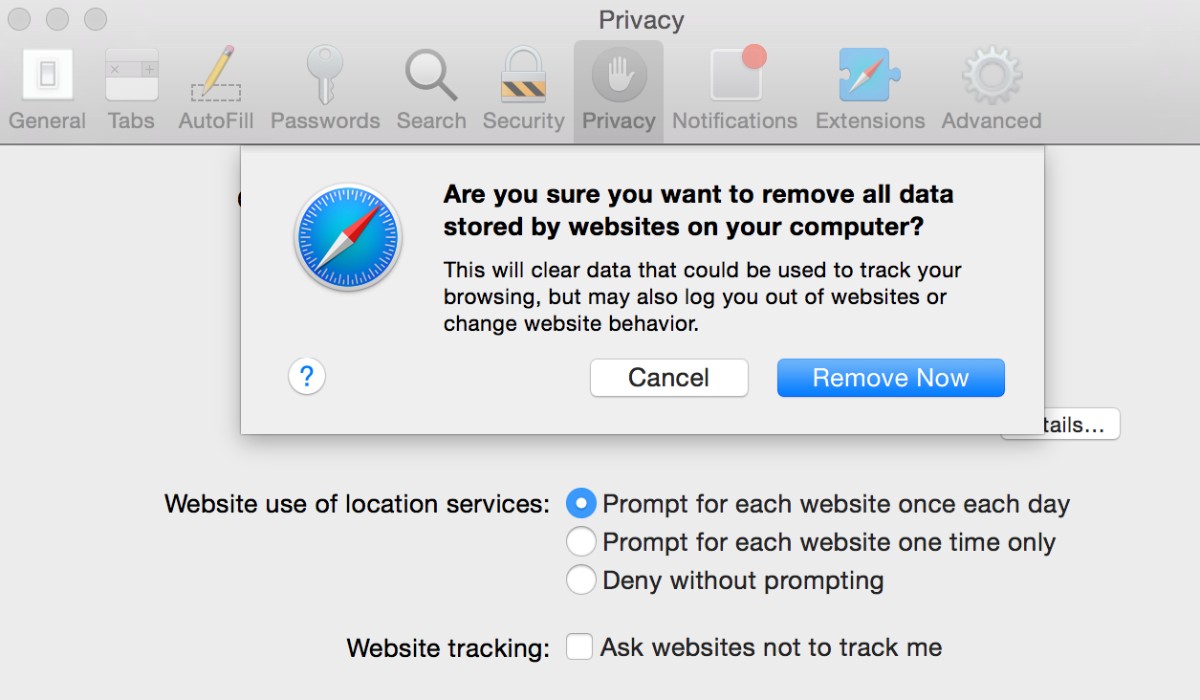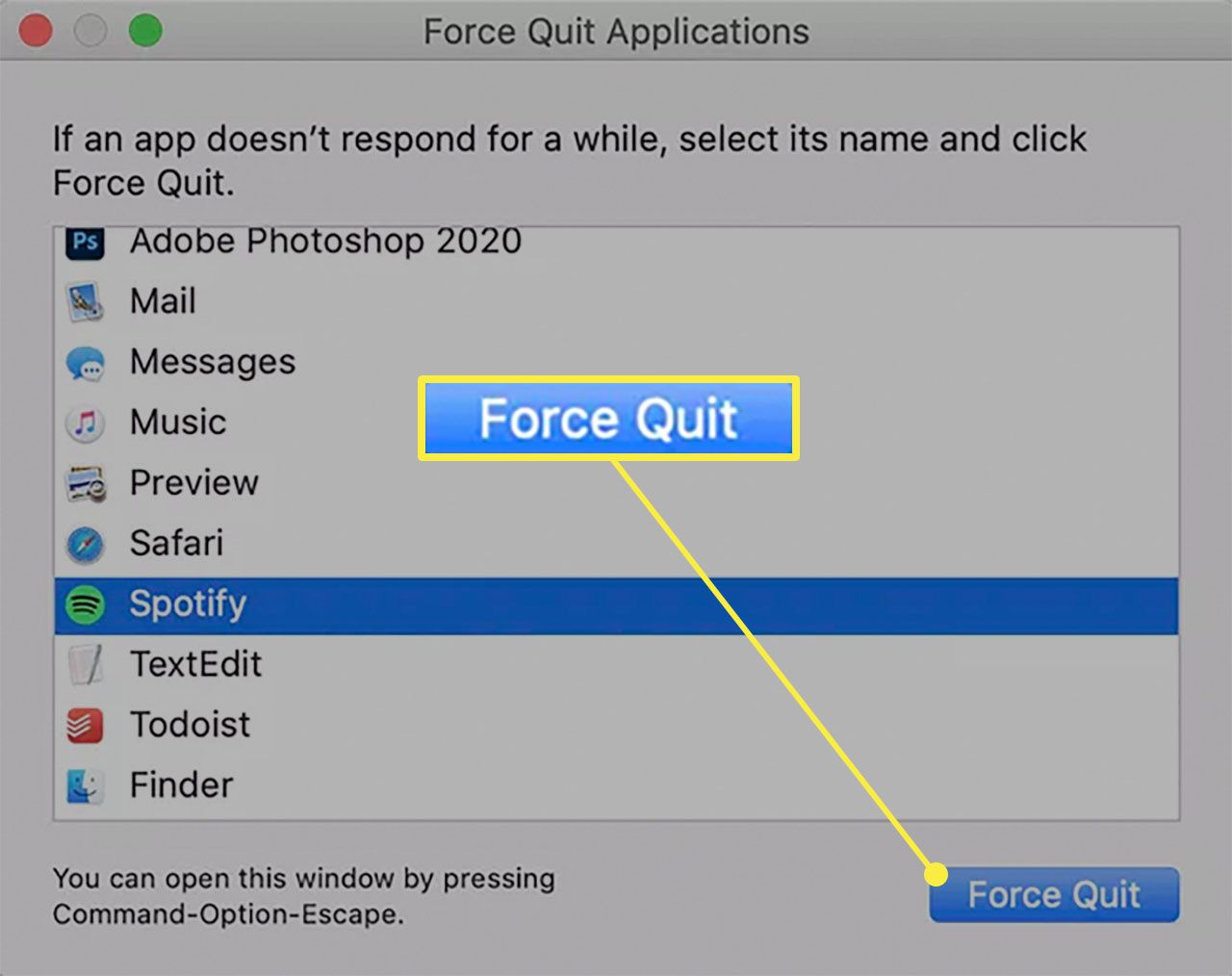Introduction
Safari, the default web browser for Mac users, is a reliable and efficient tool for browsing the internet, managing bookmarks, and accessing various web applications. However, there are instances when Safari may become unresponsive or fail to function as expected. In such cases, a force restart may be necessary to resolve the issue and restore the browser to a functional state.
A force restart is a valuable troubleshooting technique that can help address a wide range of issues, including unresponsive tabs, slow performance, or unexpected crashes. By forcibly restarting Safari, you can effectively clear temporary data, reset the browser's state, and potentially resolve any underlying software glitches that may be causing the problem.
In this article, we will explore the reasons why a force restart may be necessary for Safari on Mac, and provide a comprehensive guide on how to perform this action effectively. Whether you are experiencing frequent browser freezes, unexplained slowdowns, or other unexpected behavior, understanding how to force restart Safari can be a valuable skill for Mac users. Let's delve into the details of why a force restart may be required and how to execute this process seamlessly.
Why Force Restart Safari on Mac
Safari, as a fundamental component of the Mac ecosystem, is designed to provide a seamless and reliable browsing experience. However, there are instances when Safari may encounter issues that necessitate a force restart. Understanding the reasons behind the need for a force restart can empower users to effectively troubleshoot and resolve browser-related issues. Here are some common scenarios that may warrant a force restart of Safari on Mac:
-
Unresponsive Tabs and Windows: At times, Safari may encounter unresponsive tabs or windows, causing the browser to become non-functional. This can occur due to various factors, such as excessive memory usage, conflicting extensions, or problematic web content. In such cases, a force restart can help clear the unresponsive elements and restore the browser to a responsive state.
-
Slow Performance: Safari's performance may degrade over time, leading to slow loading times, unresponsive interactions, or delays in executing commands. This can be attributed to accumulated cache data, excessive browser history, or conflicting processes running in the background. A force restart can help alleviate these performance issues by clearing temporary data and resetting the browser's state.
-
Unexpected Crashes and Freezes: Safari may experience unexpected crashes or freezes, disrupting the browsing experience and potentially causing data loss. These issues can stem from incompatible browser extensions, outdated software, or conflicts with system resources. By performing a force restart, users can mitigate these disruptions and potentially resolve the underlying causes of the crashes and freezes.
-
Browser Customization Errors: Customizations made to Safari, such as the installation of third-party extensions or modifications to browser settings, can sometimes lead to unforeseen errors or conflicts. These errors may manifest as unresponsive browser behavior, rendering certain features inaccessible, or causing the browser to behave unpredictably. A force restart can help reset the browser to its default state, potentially resolving customization-related issues.
-
Software Glitches and Inconsistencies: Safari, like any software application, may encounter glitches or inconsistencies that affect its stability and performance. These glitches can manifest in various ways, including rendering issues, script errors, or unexplained behavior. A force restart can help address these software-related issues by clearing temporary data and resetting the browser's state.
By understanding the potential reasons for force restarting Safari on Mac, users can effectively address a wide range of browser-related issues and maintain a smooth browsing experience. Now, let's explore the practical steps to perform a force restart of Safari on Mac, empowering users to troubleshoot and resolve browser issues effectively.
How to Force Restart Safari on Mac
When encountering issues with Safari on your Mac, a force restart can serve as a valuable troubleshooting step to address unresponsive behavior, crashes, or performance issues. Here's a comprehensive guide on how to effectively force restart Safari on your Mac:
Step 1: Close Safari
Before initiating the force restart process, it's essential to ensure that Safari is completely closed. If the browser is unresponsive, you can force quit Safari by pressing "Option + Command + Esc" to open the "Force Quit Applications" window, selecting Safari, and clicking "Force Quit."
Step 2: Relaunch Safari
After force quitting Safari, relaunch the browser to determine if the issue persists. In some cases, relaunching Safari may resolve the problem without the need for a force restart.
Step 3: Access the Apple Menu
If the issue persists, proceed to force restart Safari by accessing the Apple menu located in the top-left corner of your screen.
Step 4: Select "Force Quit"
Within the Apple menu, select "Force Quit" to open the "Force Quit Applications" window. This window displays a list of currently running applications, including Safari.
Step 5: Choose Safari and Force Quit
Locate Safari in the list of applications and select it. Click the "Force Quit" button to forcibly terminate the Safari process.
Step 6: Confirm Force Quit
A confirmation dialog will appear, prompting you to confirm the force quit action. Click "Force Quit" to proceed.
Step 7: Relaunch Safari
Once Safari has been force quit, relaunch the browser to initiate a fresh session. Upon relaunch, Safari will start with a clean slate, potentially resolving the issues that prompted the force restart.
By following these steps, you can effectively force restart Safari on your Mac, providing a proactive approach to troubleshooting browser-related issues. Whether you encounter unresponsive tabs, slow performance, unexpected crashes, or customization errors, the force restart process can help restore Safari to a functional state, allowing you to resume seamless browsing and web-based activities.
Remember that a force restart should be considered a troubleshooting step and may result in the loss of unsaved data in the affected browser session. It's advisable to regularly save your work and maintain backups to minimize the impact of unexpected browser issues.
With this guide, you are equipped with the knowledge to perform a force restart of Safari on your Mac, empowering you to address browser-related challenges effectively and maintain a smooth browsing experience.
Conclusion
In conclusion, Safari serves as a vital gateway to the online world for Mac users, offering a seamless browsing experience and a range of powerful features. However, the occasional need to force restart the browser may arise due to unresponsive tabs, slow performance, unexpected crashes, customization errors, or software glitches. By understanding the reasons behind the need for a force restart and mastering the process of executing it, users can effectively troubleshoot and resolve browser-related issues, ensuring a smooth and uninterrupted browsing experience.
The ability to force restart Safari on Mac empowers users to take proactive measures in addressing browser-related challenges. By following the comprehensive guide outlined in this article, users can confidently navigate the steps to force quit and relaunch Safari, potentially resolving unresponsive behavior, crashes, or performance issues. This proactive approach to troubleshooting can help users regain control of their browsing experience and minimize the impact of unexpected browser issues.
It's important to note that while a force restart can effectively address certain browser-related issues, it should be considered a troubleshooting step and may result in the loss of unsaved data in the affected browser session. Therefore, it's advisable to regularly save work and maintain backups to mitigate the impact of unexpected browser issues.
By equipping users with the knowledge and practical steps to force restart Safari on Mac, this article aims to empower individuals to navigate and troubleshoot browser-related challenges effectively. Whether encountering unresponsive tabs, slow performance, unexpected crashes, or customization errors, users can leverage the force restart process to restore Safari to a functional state, enabling them to resume seamless browsing and web-based activities.
In essence, the ability to force restart Safari on Mac represents a valuable skill for users, allowing them to take control of their browsing experience and address unexpected browser issues with confidence. By understanding the significance of force restarting Safari and mastering the process, users can maintain a reliable and efficient browsing environment, ensuring that Safari continues to serve as a trusted companion in their digital endeavors.

























